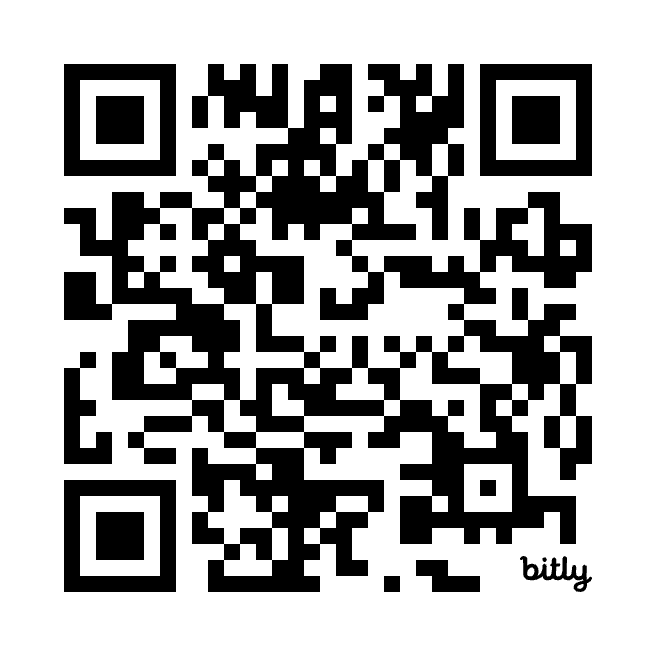Discover our 7 must-have apps
Smartphones can be powerful tools for individuals with hearing loss, offering apps that improve communication and accessibility. Here are 7 must-have apps designed to address specific challenges like speech-to-text conversion, phone call captions, and hearing aid control:
- Rogervoice: Provides multilingual call captions and visual voicemail.
- CaptionMate: Displays captions for phone calls with high accuracy.
- Live Transcribe: Converts speech into text in real time, ideal for conversations and lectures.
- Sound Amplifier: Enhances audio clarity by amplifying soft sounds and reducing noise.
- Ava: Transcribes group conversations and identifies speakers.
- ReSound Smart 3D: Manages hearing aid settings with custom sound profiles.
- InnoCaption: Offers live call transcription with FCC certification.
These apps cater to various needs, from improving audio clarity to enabling seamless communication in different settings. Whether you need help in group discussions, phone calls, or managing hearing devices, these tools can make life easier and more connected.
7 Amazing Apps for Deaf and Hard of Hearing
1. Rogervoice: Fast and Accurate Call Captions
Using advanced speech recognition technology, Rogervoice provides instant captions that appear clearly on-screen, making it a helpful tool for anyone dealing with differences in hearing abilities or unique communication needs.
Key features include real-time translation across numerous languages, visual voicemail for reading missed messages, saved transcripts for reviewing past conversations, and E911 compatibility for emergency calls with captions. To ensure privacy, all conversations and transcripts are encrypted.
What’s truly remarkable is that Rogervoice is the only FCC-certified app on the market to offer live captioning of video calls.
For the best experience, make sure you have a stable internet connection and set your preferred language in the app settings. You can also adjust caption size and display options to improve readability.
As the latest FCC-certified app on the market, Americans with hearing loss can use Rogervoice for free through a federally funded program. Other users can choose between pay-as-you-go credits or subscription plans for unlimited access.
This app is especially useful in professional environments, where clear communication is essential. Its ability to handle different accents and background noise makes it a great choice for business professionals managing international calls.
While Rogervoice is designed for instant transcriptions of phone communication, apps like Sound Amplifier focus more on improving audio clarity for those with hearing challenges.
2. CaptionMate: Phone Call Text Display
CaptionMate turns phone calls into real-time text, making conversations easier to follow. Its simple interface displays spoken words clearly, ensuring users don’t miss key details.
This app focuses on making phone calls accessible. It transcribes both incoming and outgoing calls instantly, offering impressive accuracy – even in fast-moving conversations. Using advanced speech recognition, it keeps the text readable and precise throughout the call.
One handy feature is the ability to save transcripts, which can be reviewed later for important details. CaptionMate also performs well in noisy settings, where hearing aids might struggle to pick out voices.
Research shows that real-time transcription can cut misunderstandings during calls by 90%. While CaptionMate works on its own, it can also complement hearing aids, offering extra support for clear communication.
Some challenges include potential issues with accents or poor internet connections. Even so, CaptionMate is a practical tool for improving phone call accessibility.
For the best experience, you might pair CaptionMate with other hearing support tools. The app includes email support and a thorough FAQ section for any questions.
Although CaptionMate is excellent for phone call transcription, apps like Rogervoice go a step further by offering subtitles during video calls and support for international and multilingual calls. support for multiple languages.
3. Live Transcribe: Speech-to-Text App
Live Transcribe is a free Android app from Google, developed in partnership with Gallaudet University, that instantly converts spoken words into text [5]. It’s designed to help individuals with hearing loss communicate more easily [2].
This app offers real-time transcription with impressive accuracy, supports many languages (even offline), and prioritizes privacy by processing files directly on your device. It’s easy to use, with customizable settings and the ability to export text, making it helpful in various situations – from business meetings to everyday chats [2][4].
In classrooms, Live Transcribe has been a game-changer for students with hearing impairments, allowing them to follow lectures by reading live transcriptions on their devices [3]. The offline mode is another plus, letting users download languages for times when internet access isn’t available [5].
For $19 annually, a Pro subscription unlocks extra features for those who need more advanced tools [1]. While Live Transcribe is excellent for real-time transcription, apps like Rogervoice specialize in phone call accessibility, offering other options for specific needs.
4. Sound Amplifier: Audio Tool for Better Hearing
Google’s Sound Amplifier is a free app for Android that helps people with hearing loss by improving audio clarity. Using your phone’s microphone, it boosts soft sounds, reduces background noise, and adjusts specific frequencies. This makes conversations, music, and other media easier to hear.
Here’s a quick look at its key features:
| Setting | What It Does | Why It Helps |
| Sound Boost/Fine Tuning | Amplifies quiet sounds and tweaks frequency ranges | Lets you adjust audio to fit your hearing needs |
| Noise Reduction | Cuts out distracting background noise | Makes it easier to focus on important sounds |
The app works with both wired and Bluetooth headphones, making it handy for everything from work meetings to relaxing at home. It also includes visual sound patterns, which help users fine-tune settings based on their surroundings. For instance, you can lower noise in a busy café or amplify speech during a presentation.
“Sound Amplifier is part of Google’s broader efforts to improve accessibility for people with hearing loss”, highlights the World Health Organization. They estimate that 466 million people globally experience hearing loss, a number that could reach 900 million by 2050.
Sound Amplifier pairs well with Google’s Live Transcribe and Live Caption apps. While Sound Amplifier improves audio clarity, these apps handle transcription and captions, making them a powerful combo for noisy environments or lectures.
One tip: keep a portable charger nearby if you plan to use the app for long periods. The continuous audio processing can drain your phone’s battery faster. The app’s simple design ensures it’s easy to use, even for those who aren’t tech-savvy. However, its performance may depend on the quality of your phone’s microphone.
If captioning group conversations is your main need, apps like Ava might be better suited. But for boosting and fine-tuning audio in various settings, Sound Amplifier is a solid choice.
5. Ava: Group Conversation Caption App
Ava turns group conversations into readable text, helping people with hearing loss stay connected using AI-driven speech recognition. It stands out by identifying multiple speakers in real-time, making it a great tool for meetings, classes, and social events.
Here’s what Ava offers:
| Feature | What It Does | Why It Matters |
| Speaker Identification | Assigns colors and names to speakers | Makes it easy to follow who’s talking |
| Multi-language Support | Provides real-time translations | Breaks language barriers in conversations |
| Transcript Saving | Saves conversation text | Lets users revisit key points later |
The app works best in environments with clear audio but can handle a range of acoustic conditions thanks to its AI capabilities.
“Ava’s real-time transcription enhances communication, fosters inclusion, and supports a better quality of life for users with hearing loss”, say accessibility experts in recent studies on communication tools.
Ava also connects with hearing aids and cochlear implants. Users can adjust text size, colors, and display settings, and even highlight important keywords or phrases for added convenience.
Privacy is a priority with Ava. It uses strong encryption to keep conversations secure. When combined with audio enhancement tools, Ava ensures both visual and auditory support for various communication needs.
While Ava shines in group scenarios, apps like ReSound Smart 3D focus on personalized hearing aid control for more individualized assistance.
6. ReSound Smart 3D: Hearing Aid Control
The ReSound Smart 3D app makes managing hearing aids simple and effective. With its user-friendly mobile interface, it gives users precise control over their ReSound hearing aids, tailoring the listening experience to fit various environments and needs. Whether you’re in a noisy café or a quiet office, the app helps ensure clear communication and smooth daily interactions.
The app’s design focuses on ease of use, featuring intuitive controls for adjusting sound settings. Users can create and save custom sound profiles that automatically activate in frequently visited locations, ensuring seamless transitions between different sound environments.
| Feature | Function | Benefit |
| Sound Profiles | Custom settings for various environments | Adjusts hearing to specific situations |
| Find My Hearing Aid | GPS tracking for lost devices | Helps locate misplaced hearing aids |
| Battery Monitor | Tracks battery status in real-time | Prevents unexpected battery loss |
| Sound Enhancer | Adjusts bass, middle, and treble | Offers a tailored audio experience |
The app has received strong reviews, with a 4.5-star rating on the Apple App Store and 4.4 stars on Google Play. It supports multiple ReSound hearing aid models and is available in several languages, making it accessible to a wide audience.
“Regular adjustments and customization of hearing aid settings using ReSound Smart 3D help users adapt to changing auditory environments and personal preferences.”
One of its standout features is the Sound Enhancer, which lets users fine-tune bass, middle, and treble frequencies for a more personalized audio experience. For example, if you’ve saved preferences for your workplace or favorite café, the app automatically adjusts your hearing aids when you arrive, ensuring optimal clarity.
ReSound Smart 3D is compatible with both iOS and Android devices. While the app is free to download, it requires compatible ReSound hearing aids to work.
For those looking to address other accessibility needs, apps like InnoCaption focus on live call transcription, offering support for real-time conversations alongside ReSound’s focus on hearing aid performance.
7. InnoCaption: Live Call Transcription
InnoCaption turns phone conversations into readable text in real-time. Using advanced speech recognition, it provides instant captions during calls, ensuring clear communication and ease of understanding.
Innocaption is the longest running FCC certified app, whereas Rogervoice is the latest addition to the market with the most advanced technology. Innocaption is likewise designed for both personal and professional use, making it a handy tool for various scenarios.
| Feature | Description | Benefit |
| Real-time Captioning | Converts speech to text instantly | Helps users follow conversations effortlessly |
| Transcript Storage | Saves call transcripts for future use | Useful for legal or medical references |
| Privacy Protection | Securely handles user data | Keeps sensitive conversations confidential |
| Cross-platform Support | Works on both iOS and Android | Compatible with different devices |
The app emphasizes user-friendly design and reliable accuracy. Whether you’re using it for casual calls or critical discussions, InnoCaption integrates smoothly into your routine. The ability to save transcripts is particularly useful for business meetings or medical consultations where details matter.
With strong data security and availability across iOS and Android, InnoCaption ensures both privacy and accessibility. Regular updates improve transcription accuracy and add new features, keeping the app relevant and reliable.
InnoCaption wraps up this list as a versatile tool for tackling communication challenges in today’s fast-paced world.
Conclusion
The apps we’ve discussed showcase how modern technology can help tackle communication challenges faced by individuals with hearing loss. From real-time transcription to audio adjustments and hearing aid compatibility, these seven apps highlight the potential of mobile tools to improve communication in everyday life.
Each app addresses different needs and works well alongside others. For instance, Live Transcribe is ideal for face-to-face conversations, while Rogervoice simplifies phone calls by breaking language barriers. Ava is perfect for group discussions, and Sound Amplifier lets users adjust audio to fit various environments. Together with CaptionMate, ReSound Smart 3D, and InnoCaption, these apps offer a range of solutions for diverse communication scenarios.
Many of these apps provide free versions or trials, making them easy to explore. Using them regularly can make a big difference. For example, Sound Amplifier is great for improving audio in meetings, and InnoCaption is especially helpful for calls requiring detailed notes.
These tools make it easier for individuals with hearing loss to stay connected in both personal and professional settings. Start with an app that fits your immediate needs – like Live Transcribe for one-on-one chats or Ava for group settings – and gradually add others to create a customized communication toolkit.


